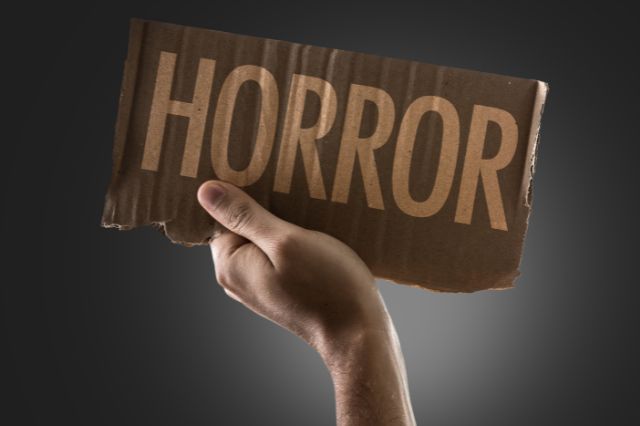Horror stories have captivated audiences for centuries, invoking a range of emotions from fear and suspense to excitement and intrigue. While the written word lays the foundation for these chilling tales, it is the role of horror illustrators that truly brings these stories to life.
The skillful combination of vivid imagery and artistic interpretation adds a new layer of terror and fascination to the narrative, creating unforgettable experiences for readers. In this article, we will delve into the crucial role horror illustrators play in shaping and enhancing the horror genre.
Setting the Stage: Atmosphere and Tone
In horror stories, the atmosphere and tone are critical in building tension and eliciting fear. Horror illustrators have the daunting task of translating these intangible elements into visuals that can send shivers down readers’ spines. Through careful use of color, lighting, and composition, illustrators can create a sense of foreboding and unease. Dark, muted tones often dominate horror illustrations, setting a somber and ominous mood. By skillfully manipulating shadows and highlights, illustrators can guide the viewer’s eye to focal points, intensifying the sense of dread and anticipation.
Monsters and Nightmares: Character Design
One of the hallmarks of horror stories is the presence of terrifying creatures and characters that haunt our nightmares. Horror illustrators excel at crafting grotesque, otherworldly beings that linger in the recesses of our imagination. They breathe life into these creatures, allowing readers to witness the terror they evoke. From vampires and werewolves to demons and ghosts, horror illustrators employ intricate details, exaggerated features, and distorted anatomy to create unforgettable and horrifying characters. By blending the familiar with the unknown, these artists give shape to the deepest fears that reside within us all.
Creating Suspense: Visual Storytelling
Just as words build suspense in a horror story, horror illustrators employ visual storytelling techniques to maintain tension and keep readers on the edge of their seats. Through carefully composed sequences and panel arrangements, they guide readers through a visual narrative that unfolds with every turn of the page. By strategically controlling the pacing and framing of their illustrations, horror artists can manipulate the reader’s emotions, heightening the impact of climactic moments. Skillful use of negative space, close-ups, and dynamic angles all contribute to the ebb and flow of suspense, making horror stories all the more immersive and captivating.
The Power of Imagination: Leaving Room for Interpretation
One of the remarkable aspects of horror illustration is its ability to leave certain details up to the viewer’s imagination. By strategically withholding or obscuring certain elements, illustrators can tap into the reader’s subconscious, allowing them to conjure up their own terrifying interpretations. This technique can be incredibly effective, as it engages the reader’s active participation in the story. Horror illustrators create a delicate balance between revealing enough to incite fear and leaving enough to the imagination to spark deep-rooted dread. This collaboration between the illustrator and the reader amplifies the horror experience, making it more personal and visceral.
Beyond the Page: Influence on Popular Culture
The impact of horror illustrators extends far beyond the confines of a book. Their contributions to popular culture are undeniable, shaping the way horror is perceived and consumed. Iconic horror illustrations have become synonymous with the stories they depict, forever etching themselves into the collective consciousness. Consider the haunting cover art of Stephen King’s novels or the chilling imagery associated with classic horror movies. Horror illustrators create visual icons that become an integral part of the horror genre’s identity, leaving an indelible mark on our cultural landscape.
Collaborative Creations: Authors and Illustrators
The collaboration between authors and horror illustrators is a dynamic and symbiotic relationship. While the written word sets the stage and establishes the narrative, the illustrator breathes life into the author’s vision, enhancing the impact of the story. Through a close working relationship, authors and illustrators combine their talents to create a cohesive and immersive horror experience. Their shared understanding of the story’s themes, characters, and atmosphere enables them to craft illustrations that resonate with the intended emotions and amplify the horror narrative.
Exploring New Horizons: Digital Art and Animation
In recent years, advancements in technology have opened up new possibilities for horror illustrators to explore. Digital art and animation have revolutionized the way horror stories are brought to life visually. With the aid of powerful software and tools, illustrators can create intricate and immersive illustrations that push the boundaries of imagination.
Digital art allows for greater flexibility and experimentation, enabling horror illustrators to manipulate colors, textures, and lighting with ease. They can seamlessly blend different art styles, add layers of depth and detail, and create breathtaking visual effects. The digital medium also offers the advantage of easy editing and revision, allowing illustrators to refine their work until they achieve the desired atmosphere and impact.
Animation, in particular, has become a powerful tool in the horror genre. Through motion, horror illustrators can infuse their creations with a dynamic and unsettling energy. Animated horror illustrations can depict eerie movements, grotesque transformations, and surreal sequences that transcend static images. By incorporating subtle movements or sudden jolts, animators can intensify the fear factor, making the horror experience all the more immersive.
Furthermore, the digital realm provides horror illustrators with a platform to reach wider audiences. Social media platforms, websites, and online galleries allow artists to showcase their work to a global audience, connecting with horror enthusiasts from all walks of life. Digital art also enables collaborations with authors, filmmakers, and game developers, expanding the possibilities for horror storytelling across different mediums.
However, while digital art and animation offer exciting avenues for horror illustrators, it is important to remember that traditional techniques and mediums still hold immense value. The rawness and authenticity of hand-drawn illustrations, paintings, and sculptures can evoke a unique sense of horror and nostalgia. The blend of traditional and digital artistry can result in truly captivating and chilling visuals, bringing the best of both worlds to the horror genre.
Conclusion
Horror illustrators play an integral role in the creation of unforgettable horror stories. Through their mastery of visual storytelling, they bring atmosphere, suspense, and terrifying characters to life. By engaging the viewer’s imagination and leaving room for interpretation, horror illustrators evoke deep-rooted fear and tap into our darkest nightmares. Their contributions to the horror genre extend beyond the confines of the page, influencing popular culture and becoming iconic symbols of horror storytelling.
The collaborative relationship between authors and illustrators is a testament to the power of their combined creativity. Together, they shape and define the horror genre, leaving a lasting impact on readers and viewers alike. So, the next time you find yourself immersed in a spine-chilling horror story, take a moment to appreciate the artistry of the horror illustrator, whose illustrations elevate the narrative to new realms of terror and fascination.






